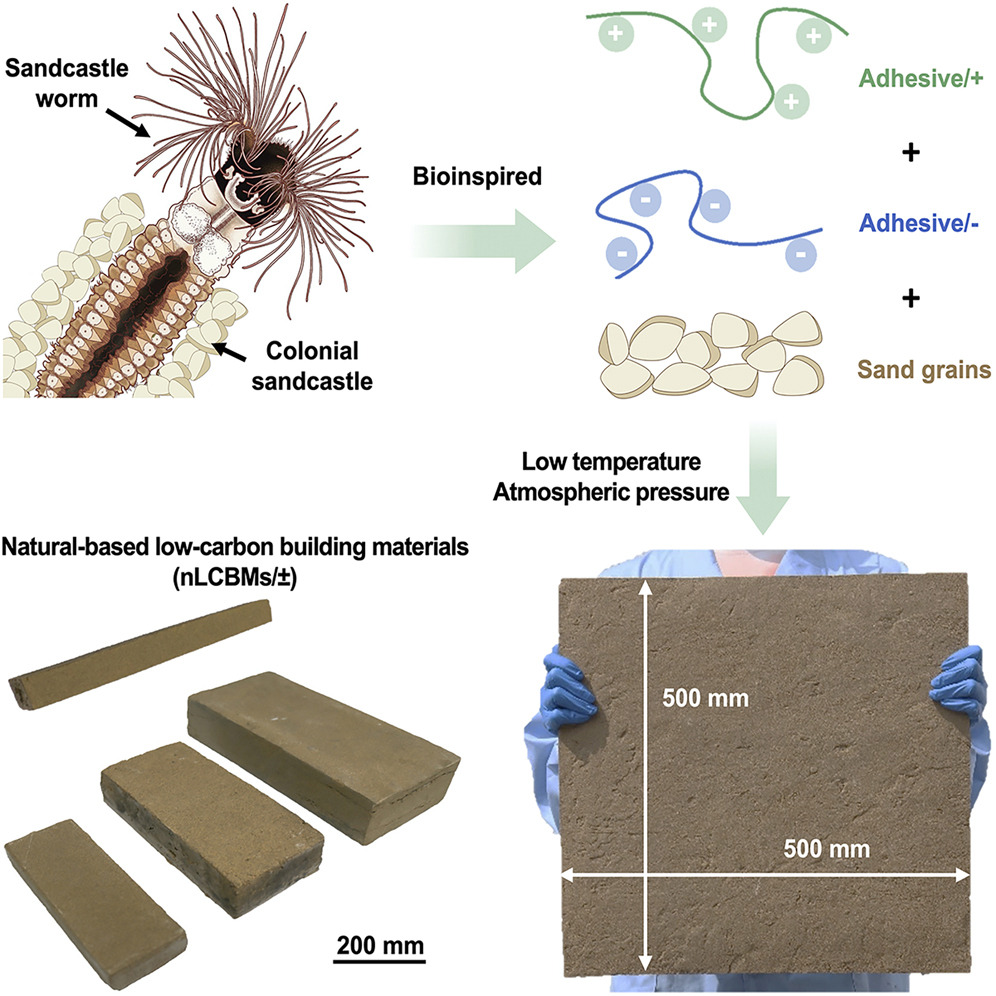Sustainable Building Solutions: Taking Cues from Marine Worms and Biopolymers

Architecture can be considered a creation of nature, evident in structures like storks’ nests, honeycombs, and termite mounds. Even in the underwater world, impressive constructions like reefs rival the scale of real cities. Among the lesser-known formations are the colonies of Phragmatopoma californica, more commonly known as sandcastle worms. These social creatures construct small tubes using grains of sand and bits of shell, collectively forming structures as large as a living room table. Now, researchers have found inspiration in these underwater “suburbs” to develop a new construction material with a low carbon footprint, based on biopolymers.
What is a biopolymer?
Before delving deeper into this subject, let’s define what biopolymers are exactly. Biopolymers are natural substances that form extended chains or structures in organic life, typically within living organisms. They consist of smaller units known as monomers, which bond together to create these extensive chains. A well-known example of a biopolymer is DNA. Other common forms include cellulose, proteins, and chitin. Biopolymers hold significant importance in biology and chemistry, as they play a fundamental role in numerous essential functions within living organisms.
In recent years, there has been a growing interest in exploring the potential of biopolymers across various applications. Some of the most promising applications include:
- Sustainable building materials, encompassing panels and structural components.
- Adhesives and sealants for construction and repair purposes.
- Thermal and acoustic insulation aimed at enhancing energy efficiency.
- Biodegradable coatings for building exteriors.
- Construction components like pipes and profiles.

Biopolymers for more sustainable construction
In the natural world, Phragmatopoma californica employs biopolymers to fashion tubes measuring up to fifteen centimeters, which serve as their lifelong abodes. These worms utilize grains of sand and shell fragments, binding them together with a secretion that imparts exceptional durability. Researchers at the Chinese Academy of Sciences have honed in on this particular substance to develop an eco-friendly biopolymer.
The scientists who have published their findings in the journal Matter found that the sandcastle worm uses a substance based on cationic and anionic proteins, enabling it to create highly robust structures. Naturally, of course, this is one of the fundamental requirements for construction. Until now, concrete was unbeatable in this respect, but cement production is energy-intensive. At the same time, building materials made from biopolymers and biomineralization processes tend to be more brittle. Are there any alternatives?
Researchers have created a positively and negatively charged biopolymer like the composite of marine worms. Technically, this means that the most disparate materials, including sand, pebbles, mineral debris and the like, can be bonded together to produce a building material at low temperature and normal atmospheric pressure.
Chitin and alginate, renewable components present in crustaceans and algae, respectively, were used as raw materials. The solidification process was completed within forty-eight hours, with a resistance similar to traditional non-reinforced concrete. Another advantage of the material is that it is easy to recycle since it can be ground and hydrated to create a new mortar. According to the researchers, all this means that the use of this biopolymer offers a much-reduced carbon footprint and contributes to more sustainable construction.
If, apart from these biopolymers, you would like to know more about sustainable building materials, we recommend that you take a look at this article on concrete reinforced with carrot and beet waste. Another area where exciting advances are being made is the production of self-repairing concrete. Finally, biomimetics is opening the door to structures with greater energy efficiency or optimized ventilation, as in the case of this material inspired by termite mounds that we recently discussed.
Fuentes:

